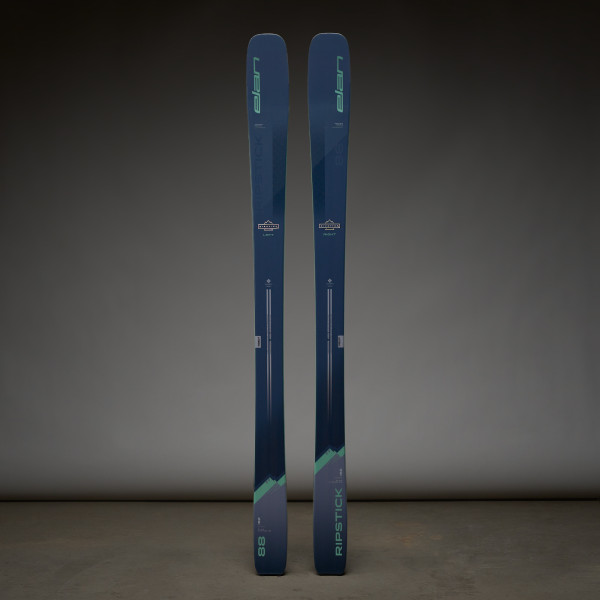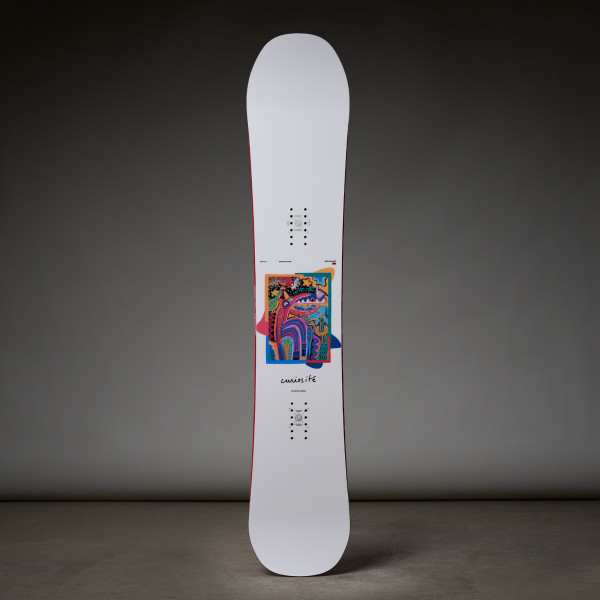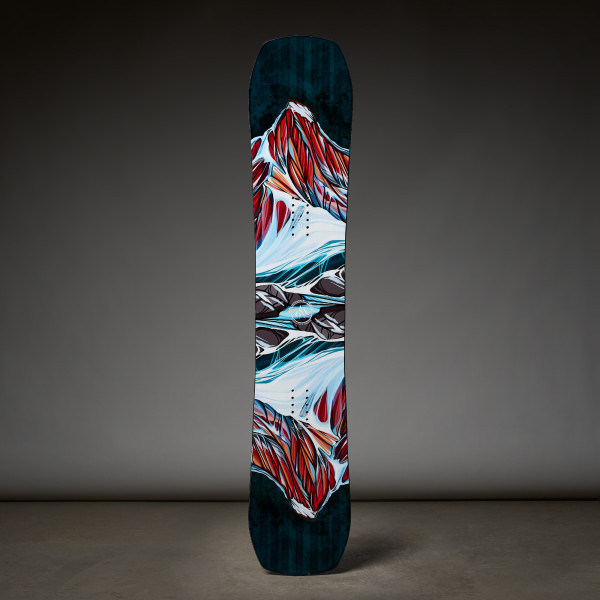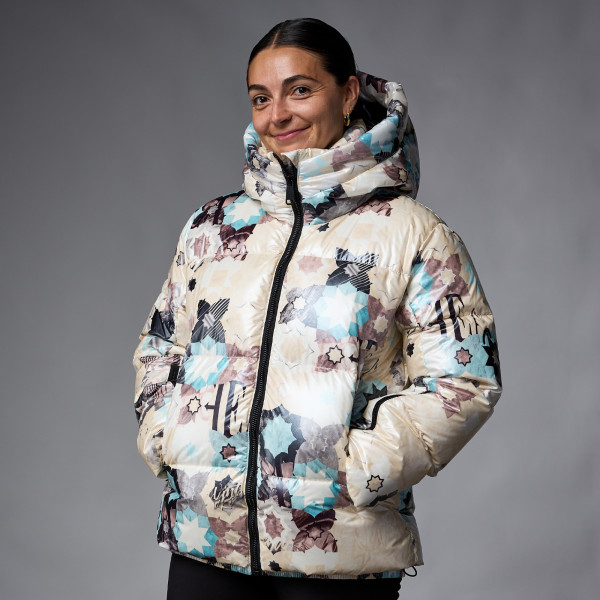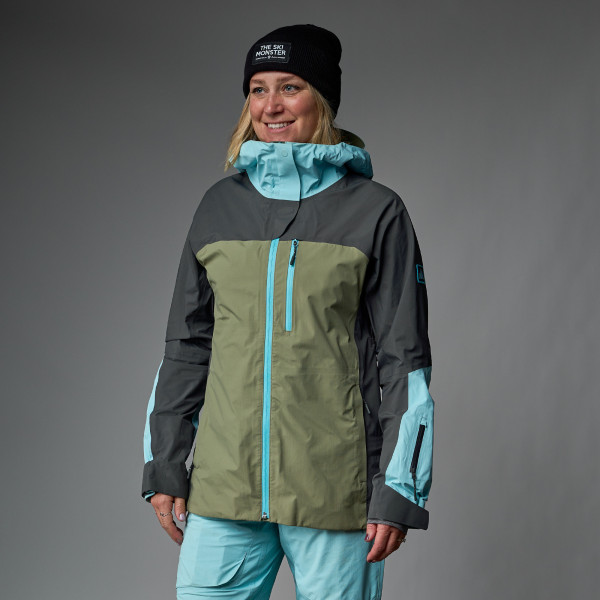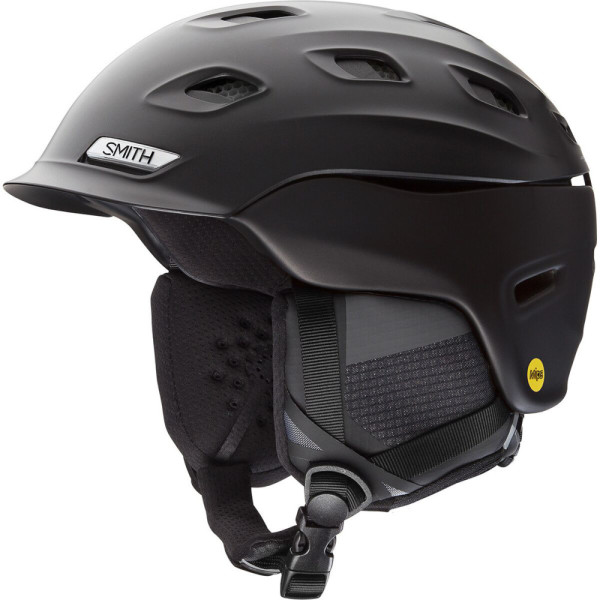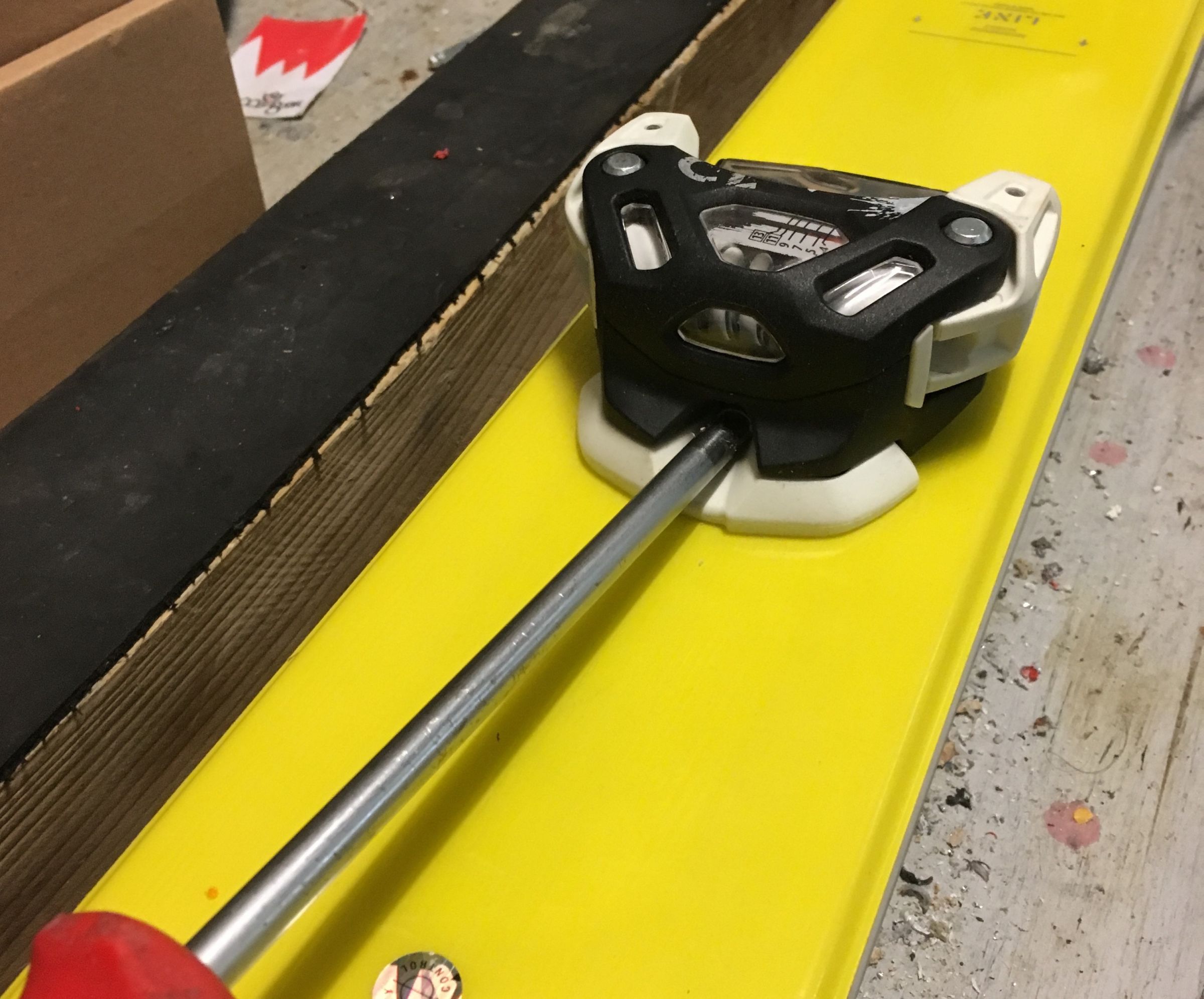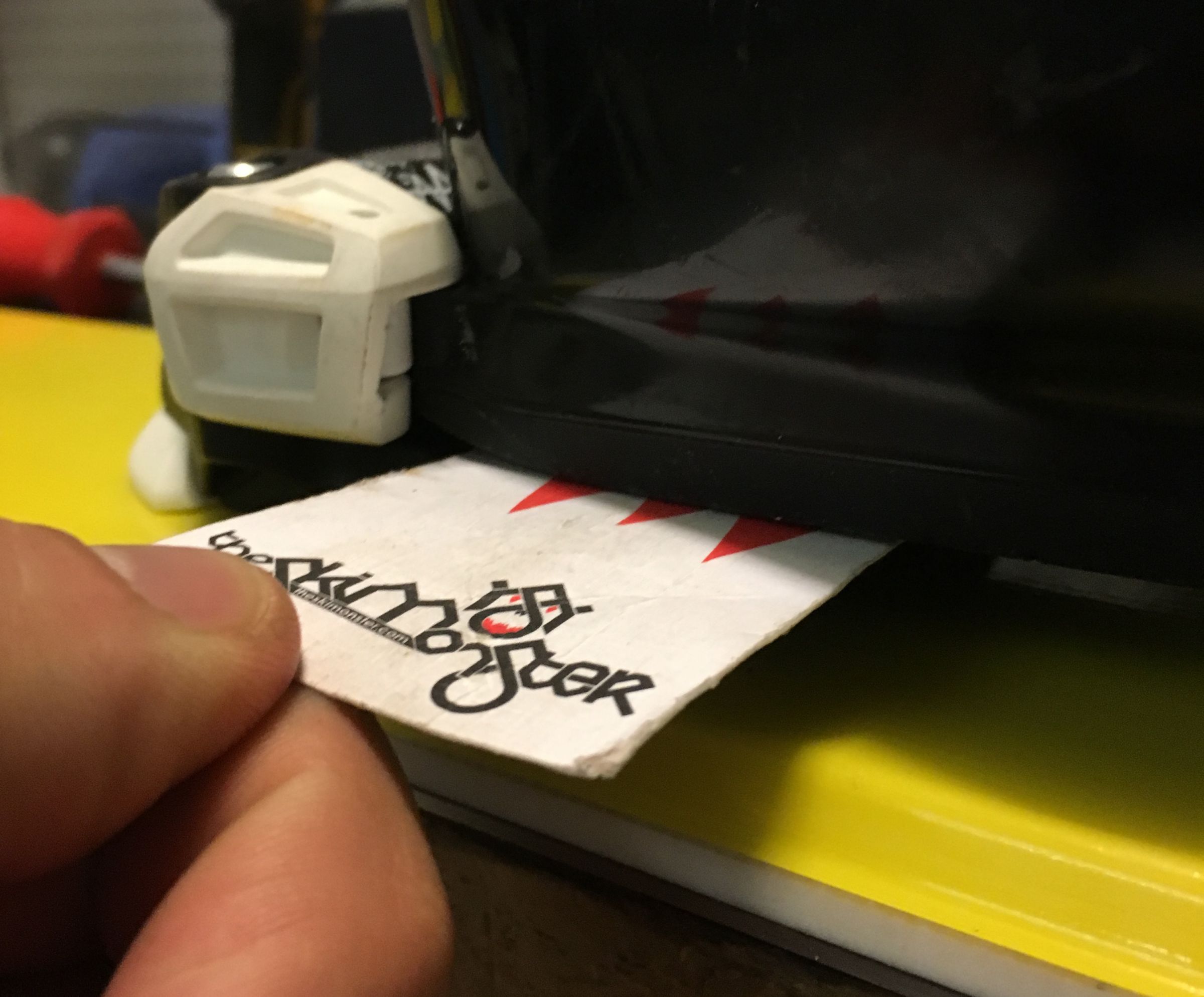Your Shopping Cart
EXTRA 10% OFF YOUR ORDER WITH CODE: LETSGO
Shop by Category
Hot Items
Hot Items
Ski & Snowboard Outlets
How To Adjust Your Tyrolia Ski Bindings
Posted September 14, 2015 @ 4:00pm | by Andrew Plourde
***Disclaimer*** It is best and we recommend having your skis adjusted and mounted by a professional technician at a ski shop. Your safety is important and comes first.
Ski bindings are possibly the most crucial piece of equipment for skiing --- ski boots are important but properly adjusted bindings keep you safe. Although adjusting them is a relatively simple task, tinkering around with them when not properly educated can end up really bad. Today we are going over the Tyrolia series of bindings, which includes the Attack 12, Attack 13, Attack 16, Attack 18, and the Adrenalin.
Adjustments are made to the bindings when a new pair of boots are purchased or you’re possibly being released when you are not supposed to. In both cases a simple adjustment will be needed to resolve the issue. If your boot is either too large or too small a remount will be needed. A local shop will be able to help you get your bindings remounted properly back onto your ski.
Through the rest of this blog I will be going over how to adjust the bindings so when your boot is engaged you are within the proper range for forward pressure.
Tyrolia Attack Ski Bindings
The section will be regarding the Attack 12, Attack, 13, and the Attack 16. The first step we want to do is identify the current forward pressure. Look at the heel piece WITHOUT the boot engaged so we can establish what we will be looking for as we move forward.
On the backside of the heel piece just above the track your binding sits on will be a metal tab protruding from the housing of the heel piece. On this metal tab will be six dashes of both sides. These dashes are for you reference and is the the main indicator for setting proper forward pressure.
Now that we have an idea of what we will be looking for you can now engage your boot by hand so we can see where the forward pressure currently rests. The ultimate goal is to have that metal tab with six dashes fall directly in the middle of the bindings housing. So we are looking for three of the dashes to be within the housing of the binding and three exposed on the outside of the binding. This is perfect forward pressure, although many boots vary in millimeter lengths the goal is to land within the range of the dashes.
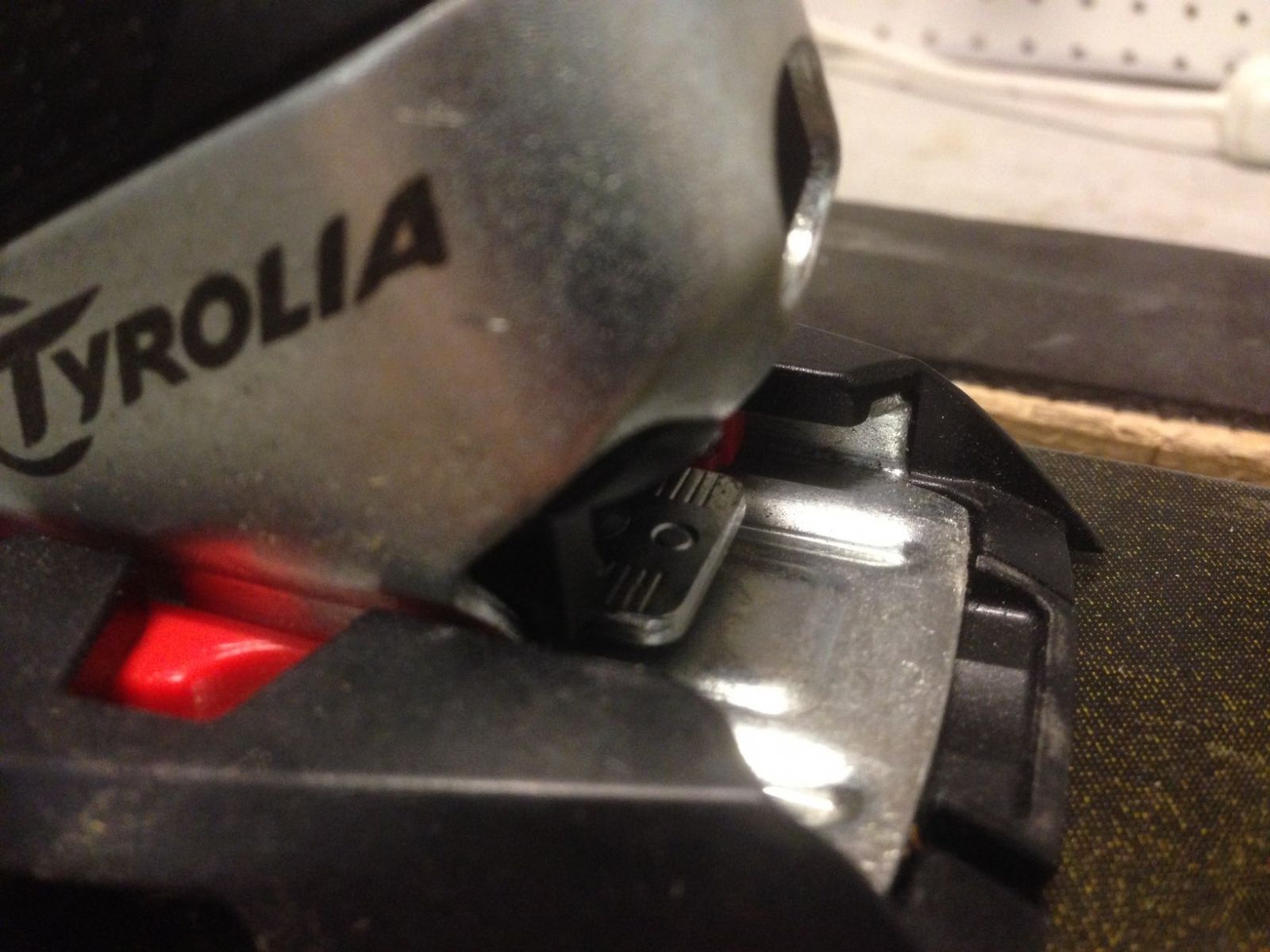
If your tabs lands completely inside or outside the housing and adjustment needs to be made. To make this adjustment a flat head screw driver is the best tool for this operation. First disengage your boot so your binding is free and becomes workable. Now you will insert the flat head screwdriver beneath the metal tab with the dashes and you will leverage/lift up. This will separate the tab from the track and will now become movable. You will notice that once you have lifted the tab there is two sets of holes in linear fashion that run down the track. Beneath the tab you unlocked are two teeth protruding, these teeth lock into the sets of holes you see on the track. Incrementally moving the heel piece forward or backwards will cause the forward pressure indicator to move that eventually results in proper forward pressure.
Now if you have engaged your boot and the metal tab with the dashes completely enters the housing of the binding and is no longer visible then your forward pressure is too high.
Below is an image of the forward pressure being too high.
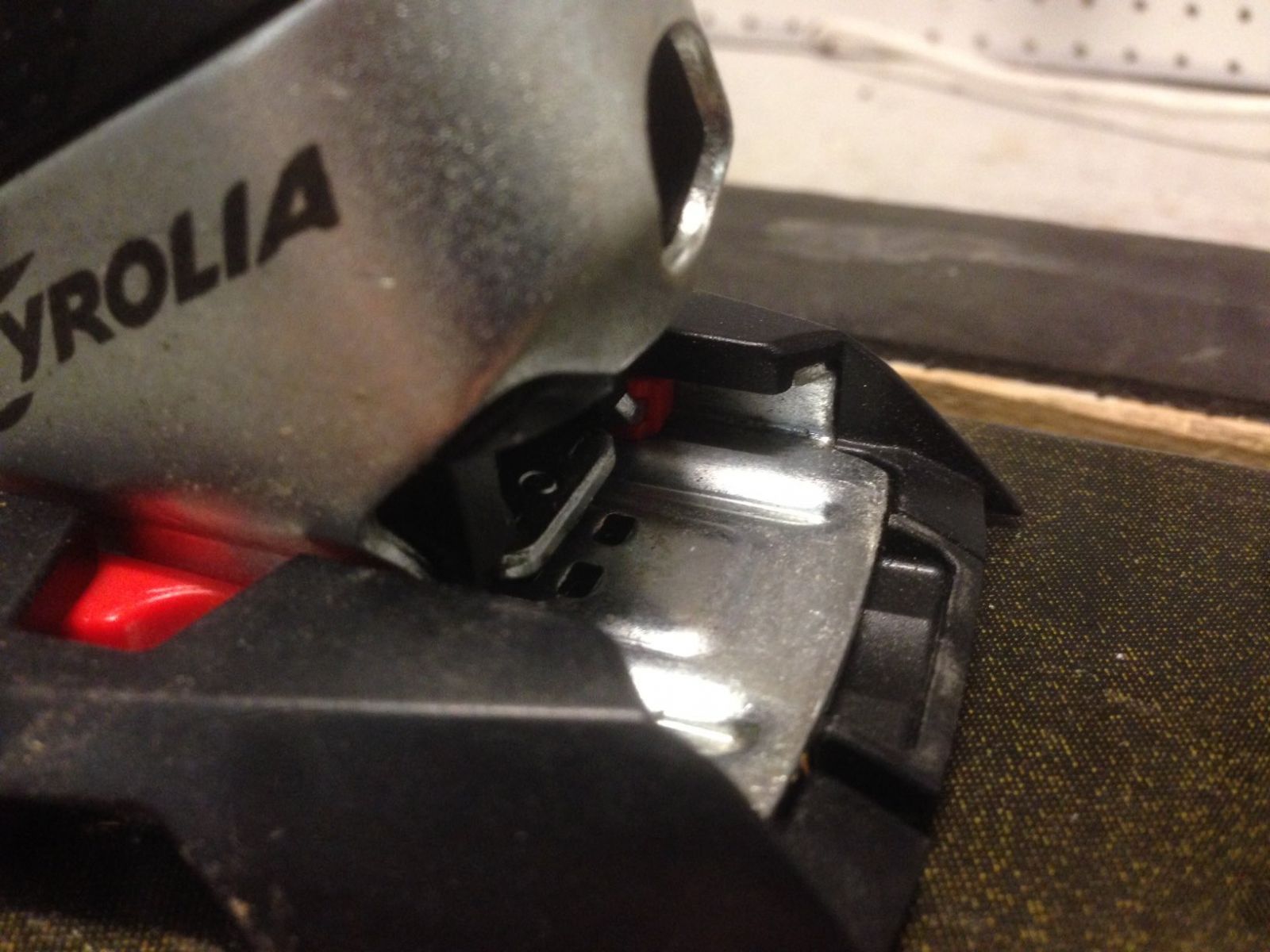
In this situation we will follow the instructions above and incrementally move the tab back a single set of holes. Once you have moved forward one set lock the tab back in by pressing down firmly on the tab and engaging it back on the track. Once this is done, insert your boot again and check the tab. Even if you see one dash exposed outside of the housing with five inside you have reached an acceptable point of forward pressure. Although its acceptable, I would still move the tab back one more set of holes to see if it sits any closer to the middle of the dashes.
If you engaged your boot and the tab was fully exposed you will follow the same steps for releasing the tab, but instead of moving the heel piece back a set of holes you will move it forward. So release the tab, incrementally creep forward a set of holes, lock the tab back down, and reengage the boot. The same rule applies, if one of the dashes entires the housing you have reached acceptable forward pressure, but I would again recommend moving the tab forward one more set of holes to see if you can land closer to the middle.
Below is an image indicating forward pressure is too low.
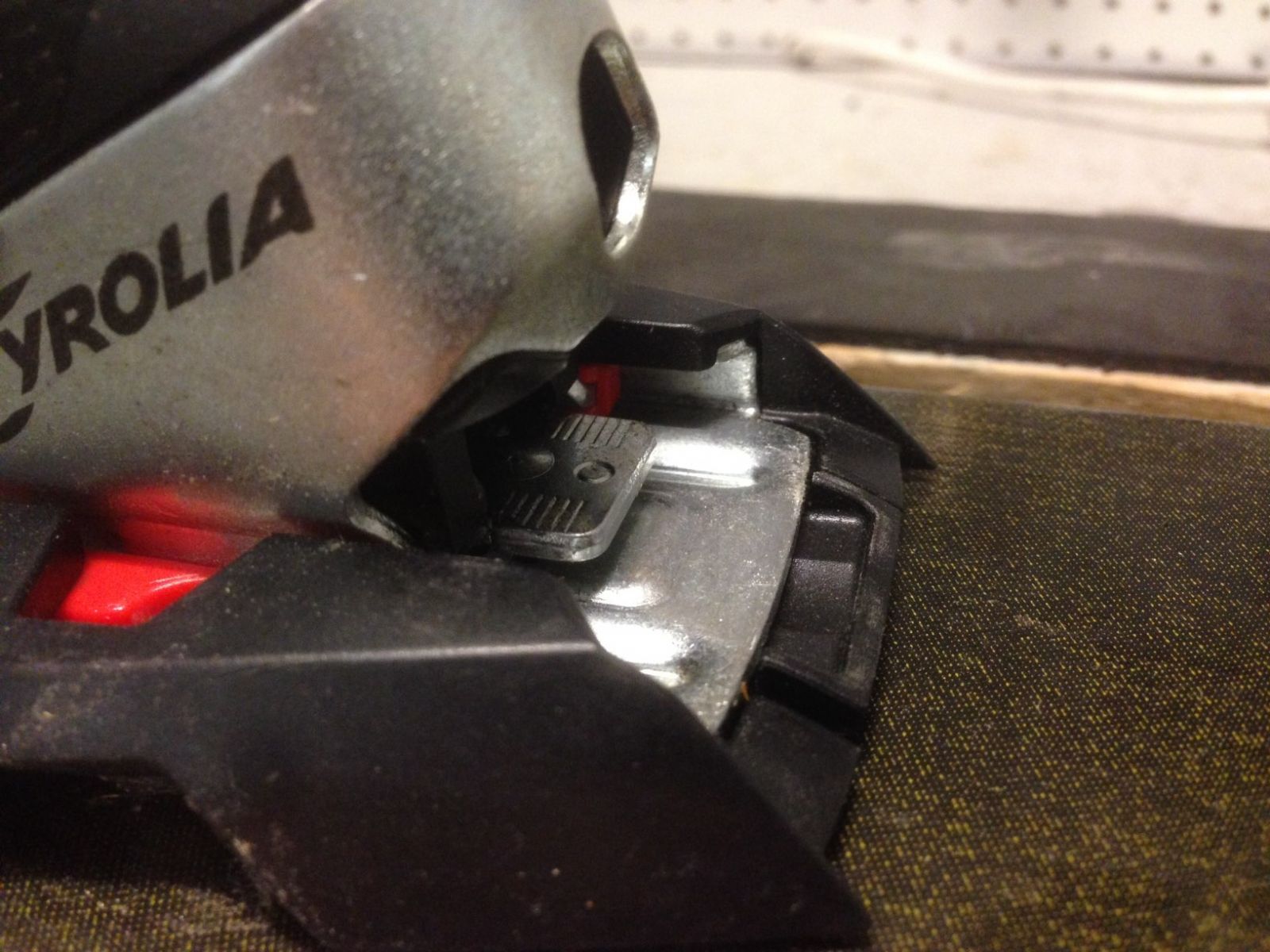
So when your adjustment is done we are hoping to see that three of the dashes are in the housing of the binding and three will be exposed. This is perfect forward pressure for the Tyrolia Attack 11, 12, 13, and 16 ski bindings.
Now if you have tried to make your boot fit and you are on your last set of holes either at the start of the track or the end without achieving proper forward pressure then a remount will be required. Once again this should be done by an expert at your local shop for proper installation.
Tyrolia Attack 18 Ski Bindings
The Attack 18 is a more aggressive binding and does not follow the same adjustment instructions like the other Tyrolia Attack Bindings.
On the heel piece of the Tyrolia Attack 18 there is no tab. You will see a screw protruding from the housing of the binding. On this screw there is a line etched around the screw that sits a few millimeters in from the end of the screw. The ultimate goal is to get that etched line to sit flush with the housing of the binding.
Engage your boot by hand again and see where the screw rests. If the line does not sit flush with the housing then an adjustment needs to be made. This process is much more simple than the other Attack Bindings. All you will need is a phillips head screw driver and simply make clockwise turns on the screw to increase pressure or counter clockwise to release the pressure.
These adjustments can be made with or without the boot engaged. If you make the change while the boot is engaged, release the boot once you have finished the adjustment then reengage the boot immediately to see if another adjustment needs to be made.
If the the line is out too far then your forward pressure is too low and this is when you will turn the screw clockwise until the line sits flush. If the screw is completely in the housing the forward pressure is too tight and counter clockwise adjustments need to be made to relieve the pressure. Simply take the phillips head screwdriver and make counter clockwise rotations until the line sits flush. Engage your boot and see how close you are and make any final adjustments.
Again, if the heel piece is at the end of the track on either side and you have not achieved proper forward pressure a remount will be required.
Tyrolia Adrenalin AT Ski Bindings
The Adrenalin uses the dash markings on the heel piece of the binding that has the same concept as the Attack 12,13, and 16. This tab is spring loaded on a lever and can be adjusted without a tool and there is only 5 dashes instead of six now.
Engage your boot and identify the forward pressure. We are following the same concepts as stated at the start of this blog. We want to have half the dashes visible and half of them in the housing of the bindings. If you see non of the dashes or all of the dashes your forward pressure is wrong and needs to be adjusted.
Image below indicates Perfectly set forward pressure.
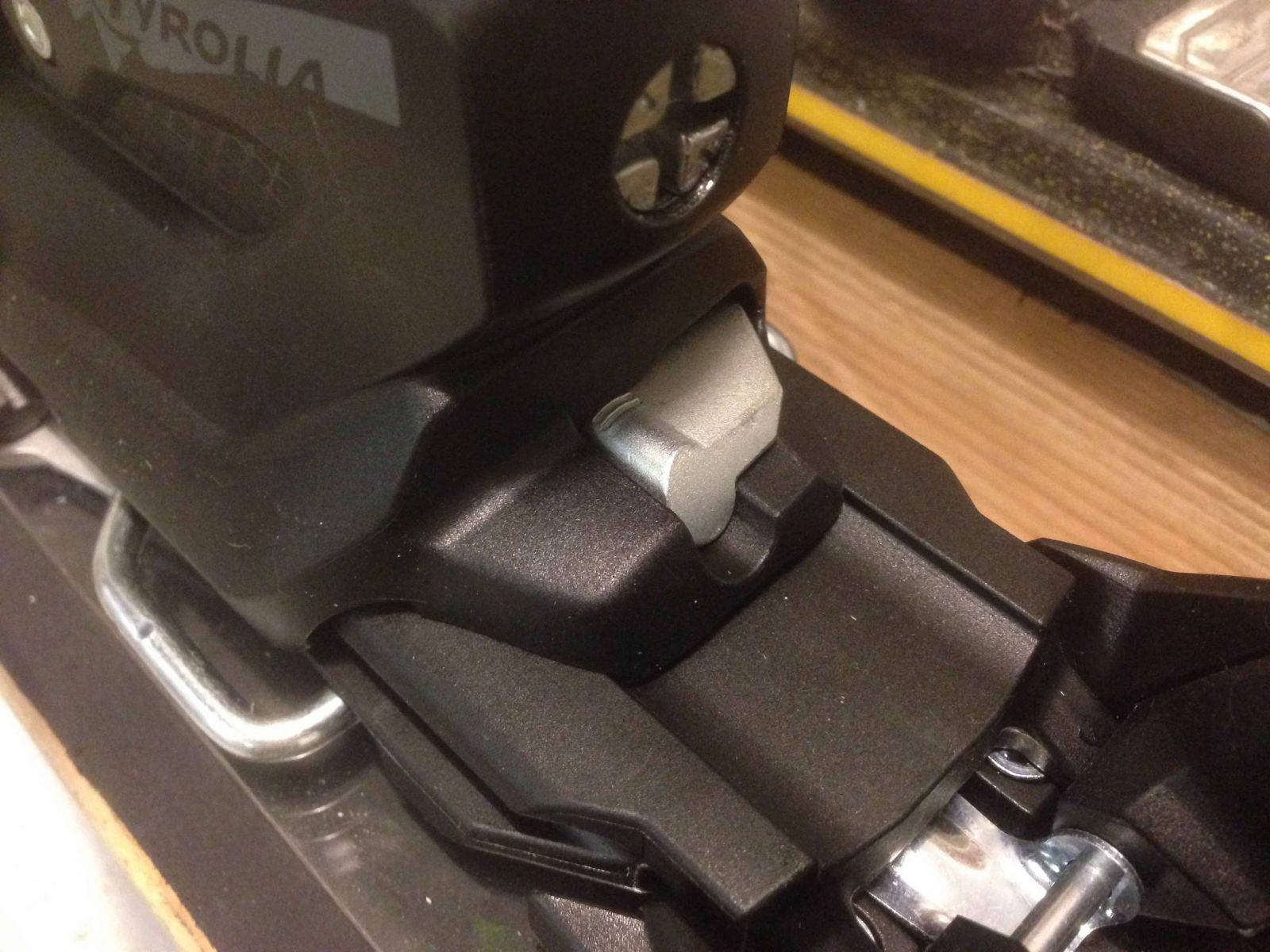
Below is an image indicating forward pressure on the Adrenalin Ski Bindings is too high.
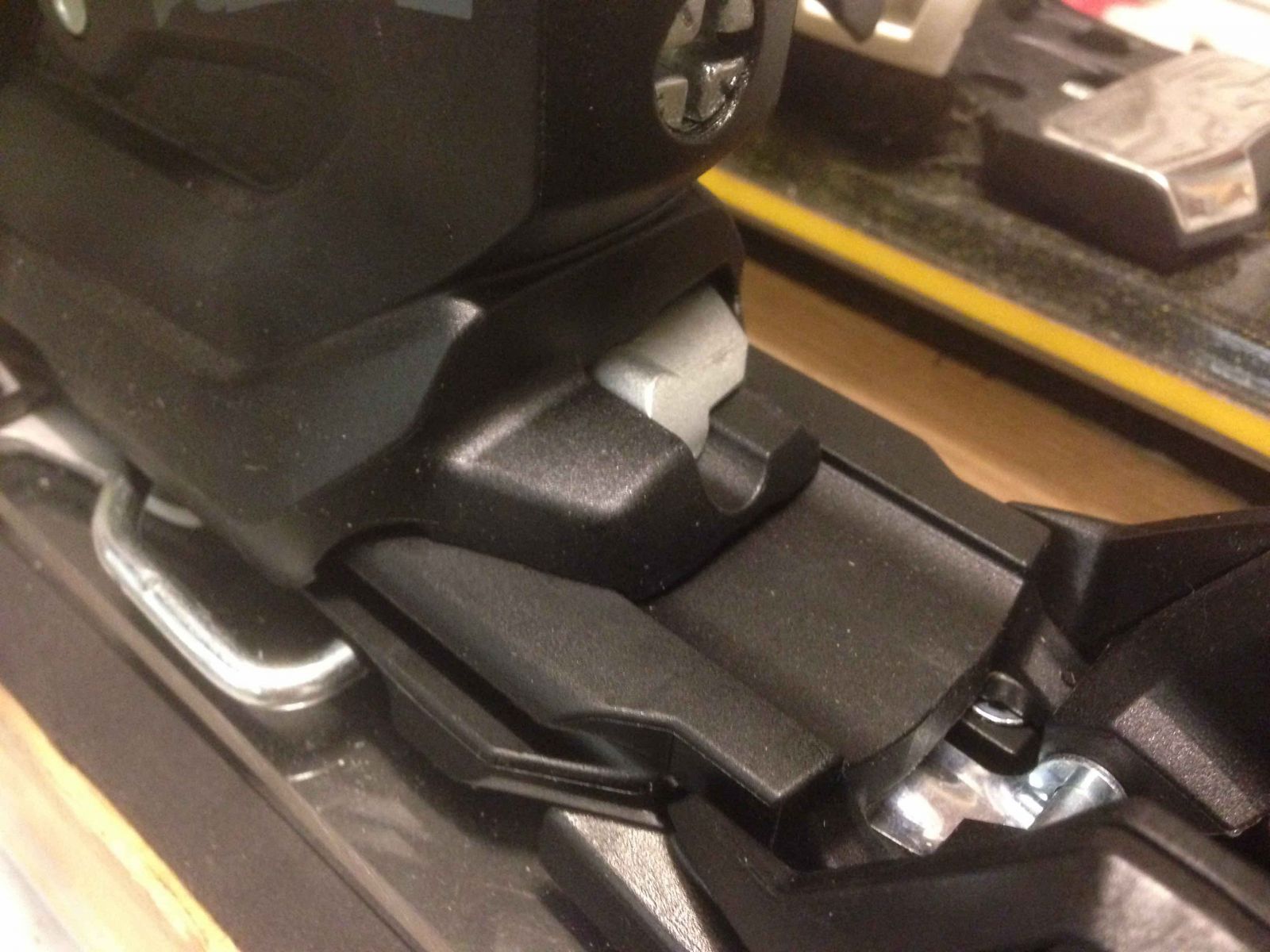
Below is an image indicating forward pressure on the Adrenalin Ski Bindings is too low.
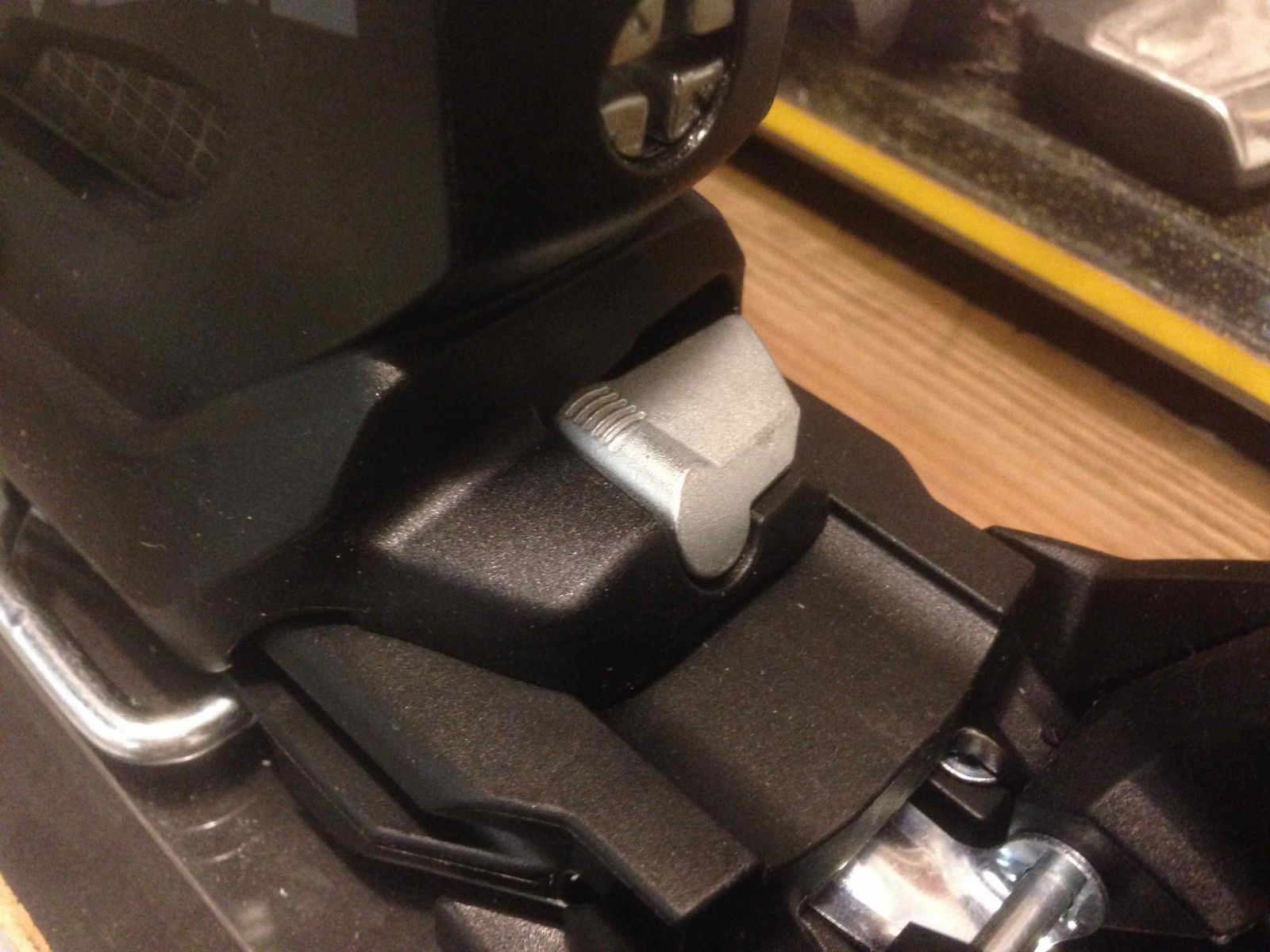
Disengage your boot and if your pressure was to high or low you will need to lift the lever upwards, which will release the heel. Now adjust the heel piece in reference to the millimeter boot sole range found on the plate of the binding ahead of the heel piece. Your boot sole millimeter length can most often be found on the side of the heel of the boot or on the bottom between the toe and heel. This will get your close to where you want to be and more minor adjustments can be made once this location is found.
After adjusting we are looking for half of the dashes to be within the binding and half exposed. This again is perfect forward pressure for the Tyrolia Adrenalin AT Ski Binding. If you have crept the heel all the way forward or back and can not get proper forward pressure, you have purchased the wrong size binding and will need to exchange for the opposite size.
Setting the DIN (Release Setting)
The last part of any binding adjustment is setting the DIN/your release setting. The DIN windows are located on both the toe and heel pieces. The DIN setting on your toe and heel piece should always be the same. The bigger the number the higher the DIN setting. The higher the DIN setting the harder it is to release/eject out of your bindings.
Now you may be asking 'How do I know what my DIN is supposed to be?'. If you find yourself asking that question, go take your skis to a shop and have them get your bindings dialed in for you. Once you know what your DIN is supposed to be for a certain binding (It does differ a bit from brand to brand) you'll know what to set your bindings at for next time.
Setting the AFD (Anti-Friction Device)
Once you have your forward pressure and DIN’s set it’s time to get the Anti-Friction Device (AFD) properly adjusted. The AFD is the spring loaded piece on the binding that sits directly under the toe of the boot that allows for a clean release during a crash. All you will need is a Phillips head screwdriver and a business card.
When you first engage your boot everything will seem fine, but that isn’t always the case. Generally there will be too much pressure forcing your boot into the housing of the binding or the exact opposite with too much space between the boot and binding. This is important for the same reasons as forward pressure, making sure you release properly in case of a crash. Too much pressure will make the release more difficult and not enough allows your boot to rattle around with the increased chance of releasing unexpectedly.
The image below shows the AFD on the Tyrolia Attack 13 binding. The Tyrolia Attack 11, 12, 13, 16, 18, and the Tyrolia Adrenalin will all follow the same steps for adjusting the AFD. Begin by engaging your boot into the binding and looking underneath the toe of the boot. You will notice if the bottom of your boot has a gap between the AFD (Left Image) or if there is clear contact with the AFD (Right Image).
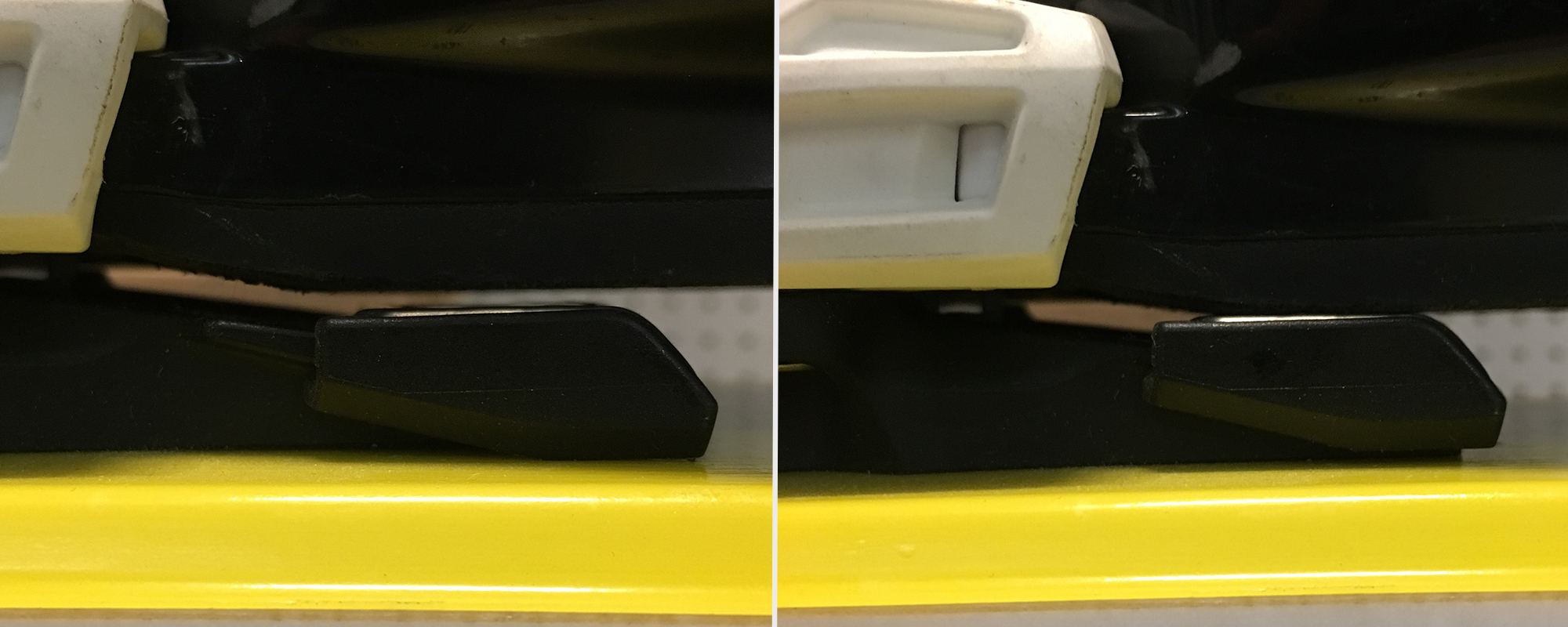
Now that we have identified whether the AFD needs to move up or down it’s time to make the proper adjustments. All you’re going to need is a Phillips screwdriver and a business card. The image below will help you identify the adjustment screw and where the business card should be entered.
If you look at the front of the toe piece of the binding you will notice a screw near the surface of the ski. Turning this screw CLOCKWISE will raise the height of the AFD and decrease the gap between the bottom of the boot. If the AFD is making contact try and insert a business card between the AFD and the bottom of the boot. If that card can’t enter and it folds over on itself then the AFD needs to be lowered. COUNTER-CLOCKWISE will lower the AFD and increase space between the boot and the AFD.
After small adjustments are made repeat the steps with the business card until the card can enter and exit with some resistance. Once you have found the sweet spot with the business card entering and exiting the AFD you have found the perfect pressure!
The one thing that I want you to take away from this blog is knowing what it means to have your forward pressure and AFD set properly. When skiers pre-release out of there bindings or don't release at all, an incorrect forward pressure or AFD is often the culprit. If the forward pressure and AFD happens to be set properly, then the DIN's (release settings) are most likely either too high or low... AND sometimes... sometimes... it's extremely rare, but you could have a lemon of a ski binding.
In conclusion if at any point you feel like you do not understand fully or may have done something wrong. DO NOT hesitate in going to your local shop so they can make the proper adjustment without fear of a mistake.
Related Articles:
How to: Adjust Marker Ski Bindings
How to: Adjust Rossignol Ski Bindings
How to: Adjust Salomon Ski Bindings

